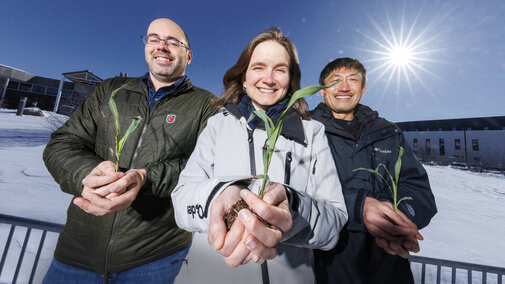Unpredictable cold spells can spell disaster for farmers, especially when it comes to sensitive crops like sorghum. But researchers at the Center for Plant Science Innovation at the University of Nebraska–Lincoln are on a mission to give this grain a winter coat, and it all boils down to understanding its daily rhythm.
“Sorghum is a fantastic crop — sustainable, low-input and perfect for biofuel production,” said Rebecca Roston, Ralph and Alice Raikes Chair of Plant Sciences and associate professor of biochemistry. “But it dies when the temperature drops, limiting where it can thrive.”
Roston is leading a team that recently received a $1.8 million grant from the National Science Foundation to pursue an innovative strategy for enhancing the cold tolerance of sorghum — and eventually, its close relative, corn. By comparing the internal clock of sorghum to that of cold-tolerant foxtail millet — which is, like sorghum, a member of the Panicoid grass subfamily — the team aims to learn how to harness sorghum’s circadian rhythm to increase its resilience to low temperatures.
This approach could be a game-changer for farmers, paving the way for a future where food security is not threatened by a surprise frost and growth occurs earlier, allowing crops to capture more of the total sunlight that falls on a field throughout the year. The key is tapping into the power of timing: Roston’s team has observed that the levels of sorghum’s key defenses against cold — certain fats and chemicals — fluctuate throughout the day. The goal is to use these fluctuations advantageously to boost sorghum’s tolerance when Mother Nature throws a cold fit.
“Think of it like taking your vitamins at the right time for maximum effect,” Roston said. “By understanding sorghum’s natural rhythm and comparing it to its more cold-tolerant relative foxtail millet, we can design strategies to enhance sorghum’s cold-fighting machinery at precisely the moment it needs it most.”

